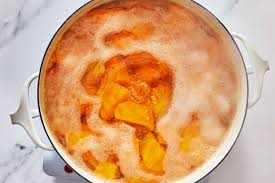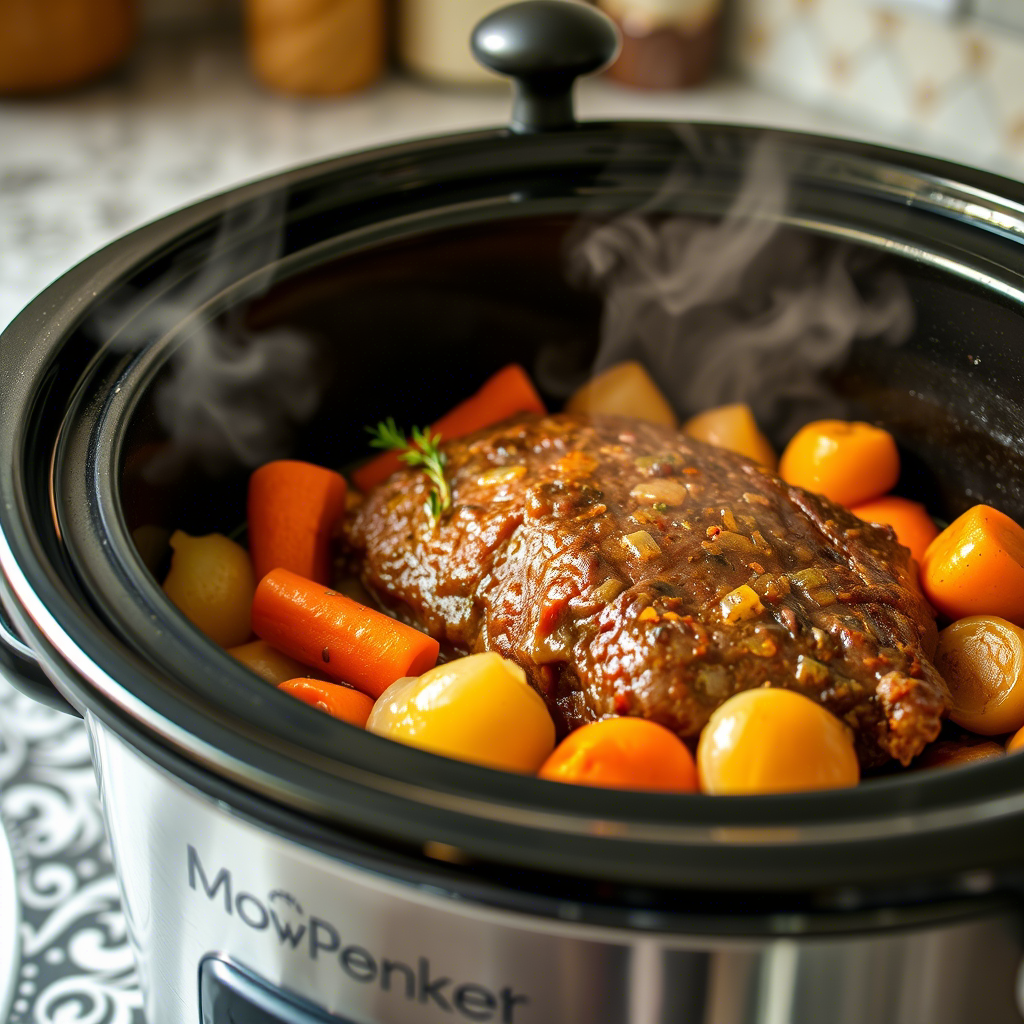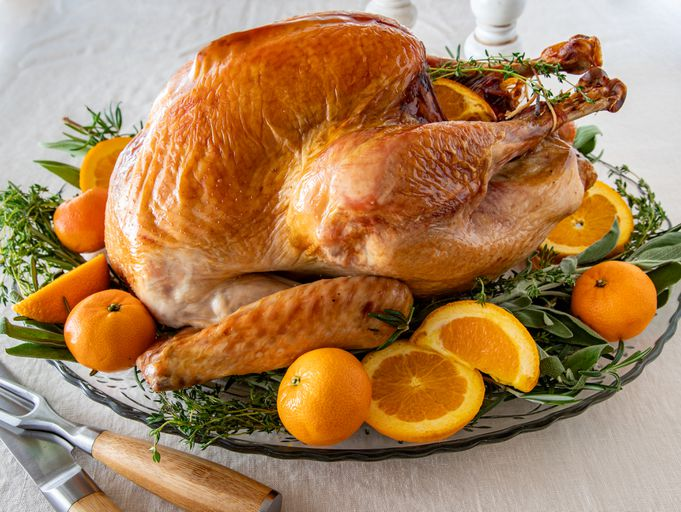Cooking small pumpkins Fast
Small pumpkins: how to prepare, what to stuff with, and how to serve?

Small pumpkins are true treasures of autumn cuisine, combining bright flavor, health benefits, and speed of preparation. Want to learn how to quickly transform humble mini-pumpkins into luxurious dishes? This article reveals all the secrets of fast cooking, showing you how to turn a small batch of seasonal veggies into stunning appetizers, fragrant bakes, or refined purées in mere minutes. Together we embark on a journey filled with inspiration and improvisation, where a tiny pumpkin takes center stage in your ultimate menu!
- Simple and quick step-by-step recipe for cooking small pumpkins
- Temperature and Cooking Time
- Cooking Time for Small Pumpkins
- Calorie content of a typical small pumpkin dish
- Types of Pumpkins for Small Roasted Pieces
- Spices for Cooking Mini Pumpkins
- Methods for Preparing Small Pumpkins
- Recipes for Small Pumpkins
- What you can use to stuff small pumpkins
- How to serve cooked small pumpkins?
Simple and quick step-by-step recipe for cooking small pumpkins
Ingredients:
- Mini pumpkins (small pumpkins) — 4 pieces
- Olive oil — 2 tbsp
- Garlic — 2 cloves (minced)
- Dried rosemary — 1 tsp
- Sea salt — to taste
- Ground black pepper — to taste
Instructions:
- Pumpkin Preparation:
- Cut each small pumpkin vertically in half and scoop out the seeds with a spoon.
- Seasoning:
- Drizzle the halved pumpkins with olive oil, sprinkle with minced garlic, rosemary, salt, and pepper.
- Baking:
- Preheat the oven to 200 °C (400 °F).
- Arrange the prepared pumpkin halves on a baking sheet, cut-side facing upwards.
- Bake in the preheated oven for about 20–25 minutes until the flesh becomes soft and golden.
- Additional Options:
- Optionally, place a small piece of cream cheese or goat cheese inside each baked pumpkin half for extra flavor.
This recipe is easy, takes minimum effort, and preserves all the nutrients of small pumpkins. Enjoy this quick and healthy dish!
Temperature and Cooking Time
Temperature plays a critical role in cooking small pumpkins, helping to achieve the perfect consistency and unlock their natural sweetness. Here are the primary recommendations for temperature and cooking time:
- Oven: The optimal temperature for baking small pumpkins is 180–200 degrees Celsius. At this temperature, it usually takes about 20–30 minutes to achieve soft, moist flesh. If you prefer a caramelized crust, increase the temperature to 220–230 degrees Celsius and shorten the baking time to 15–20 minutes.
- Microwave: You can also quickly cook small pumpkins in a microwave. Set the power level to 600–800 watts and cook in small batches, turning occasionally. Usually, 5–7 minutes is sufficient for one or two pumpkins.
- Pressure Cooker: If using a pressure cooker, place whole small pumpkins in the pot, fill with water, and cook under pressure for about 10–15 minutes.
- Stovetop: To boil small pumpkins whole on the stove, bring water to a boil, add the pumpkins, and simmer over medium heat for about 15–20 minutes until tender.
Remember that exact cooking times depend on the size of the pumpkins and the power of your kitchen appliances. Test readiness by inserting a fork or knife; if it slides in easily, the pumpkin is done. Following the correct temperature guidelines ensures even cooking and appealing appearance.
Cooking Time for Small Pumpkins
Cooking small pumpkins requires precision and understanding of the timing involved. Here’s everything you need to know about cooking these adorable fall treats, explained by a professional chef.
General Guidelines for Cooking Times:
- Whole Pumpkins:
- Boiling: Boil the pumpkins in salted water for about 15–20 minutes until they are tender.
- Baking: Bake them in the oven at 200°C (400°F) for 20–30 minutes, or until a skewer inserted meets no resistance.
- Halved Pumpkins:
- Roasting: Halve the pumpkins lengthwise, scrape out the seeds, and place face-down on a baking tray lined with parchment paper. Roast at 200°C (400°F) for 20–25 minutes, or until the flesh is soft.
- Stuffed Pumpkins: If stuffing them, add an extra 10–15 minutes to account for the filling.
- Cubed or Sliced Pumpkins:
- Sauteeing/Searing: Cube or slice the pumpkins and toss them in melted butter or olive oil. Sautee over medium-high heat for 5–7 minutes, stirring regularly.
- Stir-Fry: Dice the pumpkins into bite-sized cubes and stir-fry in a wok or skillet with other vegetables for 3–5 minutes until tender.
Tips for Perfect Results
- Always check the doneness by piercing the flesh with a fork or toothpick. If it goes in smoothly, they’re ready.
- Remember that smaller pumpkins cook faster than larger ones, so adjust your timings accordingly.
- Larger chunks take longer to cook than smaller ones, so plan accordingly when chopping.
Now that you understand the intricacies of cooking small pumpkins, go ahead and create delicious meals with confidence!
Calorie content of a typical small pumpkin dish
Nutritional Information
- One small pumpkin (approximately 200g): typically contains about 40–50 calories, making it a low-calorie option.
- The majority of these calories come from carbohydrates, particularly dietary fiber and sugars found naturally in the fruit.
- There is virtually no fat in plain pumpkin, meaning it’s nearly fat-free.
Calories Based on Different Preparation Methods:
- Simply Roasted/Baked:
- Roasting a small pumpkin with minimal seasoning (olive oil, salt, etc.) increases caloric intake marginally. Assuming 1 tablespoon (15ml) of olive oil, the total calories rise to ~120–130 calories.
- With Butter or Cheese:
- Adding butter or cheese boosts calories considerably. One small pumpkin topped with 2 teaspoons (~10g) of butter reaches ~160–170 calories, whereas incorporating 2 tablespoons (~30g) of grated cheese raises the count to ~180–200 calories.
- In Soups/Purees:
- Making soups or purees with milk, cream, or broth affects the final calorie count. Using 1 cup (240ml) of low-fat milk contributes ~80–90 calories, bringing the total to ~120–130 calories. If using cream, expect closer to ~200–220 calories.
- Stuffed Pumpkins:
- Stuffing small pumpkins with rice, quinoa, or couscous introduces additional calories. For example, ½ cup (100g) of cooked rice adds ~130–140 calories, pushing the total towards ~170–180 calories.
Thus, the calorie content varies widely depending on how the pumpkin is prepared. Simple roasting remains among the lowest-calorie options, while enrichments like dairy products or fillings raise the numbers. Ultimately, small pumpkins remain a nutritious and low-calorie base for countless creative recipes.
Types of Pumpkins for Small Roasted Pieces
When choosing pumpkins to prepare small roasted pieces or as a decorative ingredient in dishes, it’s essential to consider the following varieties known for their sweetness and texture:
1. Sugar Pie Pumpkin
This variety is smaller than traditional carving pumpkins but has dense flesh that’s perfect for baking. It offers excellent flavor and holds its shape well when cooked. It’s ideal for making purees, pies, soups, or even baked wedges.
2. Baby Bear Pumpkin
These miniature pumpkins are cute and adorable with smooth skin. They have an intensely sweet taste, similar to sugar pie pumpkins. Their size makes them great for individual servings like stuffed appetizers or side dishes.
3. Cheese Pumpkin (Long Island Cheese)
Though not commonly used whole due to its larger size, cheese pumpkins can be cut into smaller portions. The meaty interior provides rich flavor suitable for cooking various recipes including stews, breads, and cakes.
4. Kabocha Squash
Although technically classified under squashes rather than true pumpkins, kabocha’s unique characteristics make it stand out. Its firm texture becomes creamy after heating while retaining vibrant coloration. Perfect for stuffing, grilling, boiling, steaming, etc., offering versatility beyond typical uses.
How To Choose A Good Pumpkin?
Here are some tips on selecting high-quality pumpkins specifically suited for culinary purposes:
- Look for firm specimens without soft spots indicating decay.
- Avoid cracked skins since they allow bacteria entry leading to spoilage quickly.
- Opt for those weighing around two pounds each if you want individually sized serving options.
- Check stem attachment carefully—if loose or missing entirely then avoid buying such ones because storage life will decrease drastically post-harvest.
By considering these factors along with knowing specific types mentioned above, you’ll ensure success every time preparing delicious meals using fresh seasonal produce!
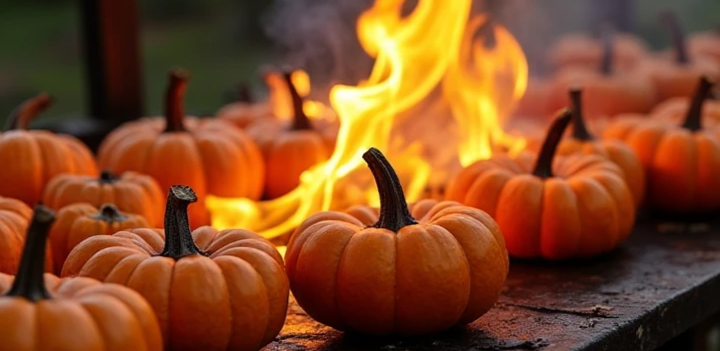
Spices for Cooking Mini Pumpkins
To enhance the natural flavors of mini pumpkins, here are several spice combinations that work beautifully:
Sweet Flavor Profile
- Cinnamon. Adds warmth and subtle sweetness. Pair it with nutmeg and ginger for depth.
- Nutmeg & Allspice. Both provide mild aromas reminiscent of autumn harvest. Use them together or separately depending on preference.
- Vanilla Extract/Bean. PowderEnhances dessert-like qualities by bringing forth notes of vanilla bean. Try infusing your dish with this fragrance!
Savory Flavor Profiles
- Salt & Black Pepper. Simple yet effective seasoning enhancing all other ingredients’ tastes. Add more complexity through additional herbs below.
- Rosemary/Garlic Thyme. Fresh rosemary sprigs add earthiness whereas garlic thyme contributes tanginess balancing both textures nicely.
- Sage/Parsley Combo. Earthy sage pairs wonderfully with bright parsley adding zest to savory preparations. Experiment mixing ratios according to personal liking.
Additional Tips:
- For maximum impact apply rub directly onto sliced surfaces before baking/cooking. Brush oil over exposed areas ensuring thorough coverage preventing drying during heat exposure.
- When roasting whole baby bear pumpkins leave intact until fully tenderized inside allowing steam buildup intensifying flavors further prior opening halves lengthwise removing seeds easily afterward slicing accordingly ready-to-eat format.
Enjoy experimenting different variations discovering new favorites among family members too!
Methods for Preparing Small Pumpkins
There are several delicious and simple methods to prepare small pumpkins such as baking, roasting on an open fire, or even using a grill. Here’s how you can do it:
Baked in the Oven
Ingredients:
- Small pumpkin(s)
- Olive oil/butter
- Salt & pepper
- Optional seasonings (rosemary, thyme, garlic powder)
Steps:
- Preheat your oven to 400°F/200°C.
- Wash the pumpkin thoroughly and cut into halves or wedges depending on size preference. Remove seeds if desired.
- Drizzle with olive oil or butter, sprinkle salt, pepper, and any additional spices of choice.
- Place them skin-side down on a baking sheet lined with parchment paper.
- Bake until tender when pierced with a fork—approximately 45 minutes to an hour. You may also broil briefly at high heat to caramelize the top surface.
Serving Tips: Serve warm with melted cheese, crumbled bacon bits, nuts, or drizzled honey for added flavor.
Roasted Over Open Fire
This method is perfect for campfires or outdoor gatherings!
Ingredients:
- Whole small pumpkin(s)
- Butter/Olive Oil
- Seasonings (salt, pepper, herbs)
Steps:
- Prepare your fire by ensuring it’s hot enough but not too intensely burning. The coals should be glowing red.
- Clean the outside of each pumpkin well. If desired, remove the stem.
- Lightly coat the exterior with butter or olive oil, then rub generously with salt, pepper, and other preferred seasonings like rosemary or chili flakes.
- Carefully place whole pumpkins directly onto the coals or hang from a wire above the flames. Rotate occasionally so they cook evenly. Cook time will vary based on fire intensity, typically around 30–45 minutes.
- Once cooked through (when flesh feels soft), carefully remove from fire and allow cooling before slicing open. Use caution as contents inside might still be very hot!
Serving Tip: Split open, scoop out insides, mix with some maple syrup or brown sugar, reinsert filling back into shells, garnish with fresh herbs, and enjoy!
These two methods ensure that your small pumpkins come out moist, sweet, and packed full of autumn flavors. Whether you’re cooking indoors or outdoors, these techniques deliver excellent results every time
Recipes for Small Pumpkins
Here are three unique recipes showcasing different ways to prepare small pumpkins. These recipes highlight various culinary styles while maintaining their simplicity and versatility.
Stuffed Mini Pumpkins with Quinoa Stuffing
Ingredients:
- 4 mini pumpkins
- 1 cup quinoa, rinsed
- ½ tsp ground cinnamon
- ¼ tsp nutmeg
- 2 tbsp butter
- 1 medium onion, diced
- 2 cloves garlic, minced
- 1 apple, peeled and chopped
- 1 tsp dried sage
- Sea salt and black pepper to taste
- Shredded cheddar cheese (optional)
Instructions:
- Preheat oven to 375°F (190°C). Cut tops off the pumpkins and scoop out seeds and fibers. Set aside.
- In a saucepan, combine quinoa with 2 cups water and bring to boil. Reduce heat, cover, simmer for about 15 minutes until liquid is absorbed. Fluff with a fork.
- Meanwhile, melt butter in a skillet over medium heat. Add onions and sauté until translucent. Stir in garlic, apples, cinnamon, nutmeg, and sage. Cook another few minutes. Mix this mixture with cooked quinoa. Season with salt and pepper.
- Fill the hollowed-out pumpkins with the prepared stuffing. Top with shredded cheese if desired.
- Cover each filled pumpkin with its lid or aluminum foil. Bake for approximately 45 minutes, until the pumpkin is tender.
Serve warm.
Creamy Roasted Pumpkin Soup
Ingredients:
- 8 small pumpkins, quartered and seeded
- 2 tbsp extra virgin olive oil
- 1 large yellow onion, finely chopped
- 2 garlic cloves, crushed
- 1 liter vegetable stock
- Fresh thyme leaves
- Ground white pepper
- Heavy cream (optional)
Instructions:
- Heat oven to 400°F (200°C). Toss pumpkin pieces with olive oil, spread them on a baking tray, and roast for about 30 minutes until golden-brown and softened.
- Sauté onion and garlic in a heavy-bottomed pot until fragrant. Add the roasted pumpkin chunks along with vegetable stock and fresh thyme. Bring to a gentle boil, reduce heat, and let simmer for 15 minutes.
- Using an immersion blender or regular blender, puree soup until smooth. Adjust consistency with more stock if needed. Season with salt and white pepper. Finish with a splash of heavy cream if desired.
Serve piping hot topped with crispy bacon bits or toasted walnuts.
Pumpkin Spice Muffins
Ingredients:
- 2 cups all-purpose flour
- 1 tsp baking soda
- 1 tsp baking powder
- 1 tsp ground cinnamon
- ½ tsp ground ginger
- ½ tsp ground nutmeg
- ¾ cup granulated sugar
- ⅓ cup vegetable oil
- 2 eggs
- 1 cup mashed pumpkin purée (from roasted small pumpkins)
- ½ cup milk
- Optional add-ins: chocolate chips, raisins, chopped pecans
Instructions:
- Preheat oven to 350°F (180°C). Line a standard muffin tin with liners.
- Whisk together dry ingredients (flour, baking soda, baking powder, spices).
- Beat wet ingredients separately (sugar, oil, eggs, pumpkin purée, milk). Gradually fold in the dry mixture just until combined. Do not overmix. Fold in any optional add-ins gently.
- Divide batter among muffin cups, filling almost full. Bake for 20-25 minutes, until toothpick inserted comes out clean. Allow cooling slightly before serving.
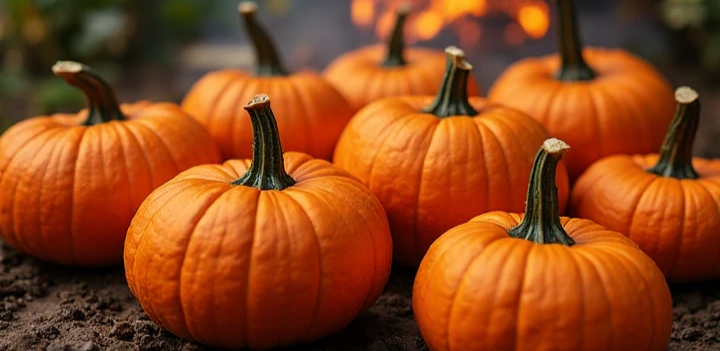
What you can use to stuff small pumpkins
Vegetable Filling
For those who prefer vegetables:
- Sauteed mushrooms, onions, and garlic.
- Roasted eggplant, zucchini, and bell peppers.
- Spinach, arugula, or Swiss chard leaves.
- Grated mozzarella or Parmesan cheese.
- A little bit of olive oil and herbs (rosemary, thyme).
Meat Filling
For meat lovers:
- Browned beef or pork mince with onions and spices.
- Chopped chicken breast baked with herbs and lemon juice.
- Sausages or hunters’ sausage slices.
- Prosciutto or bacon mixed with feta or ricotta cheese.
Vegan Filling
An option for vegans and vegetarians:
- Basmati rice or quinoa cooked with vegetables and greens.
- Black beans cooked with cherry tomatoes and avocado.
- Marinated tofu cubes in soy sauce and sesame oil.
- Shiitake mushrooms cooked with green peas and corn kernels.
Cheese Filling
Perfect for cheese enthusiasts:
- Cream cheese blended with fresh herbs and butter.
- Mascarpone or ricotta mixed with honey and nuts.
- Feta cheese with finely chopped parsley and basil.
- Gouda or cheddar mixed with smoked salmon pieces.
Dessert Filling
Turn a small pumpkin into a dessert treat:
- Apple puree with cinnamon and sugar.
- Pumpkin jam with orange and ginger.
- Vanilla pudding made with coconut milk.
- Chocolate mousse with walnuts and chocolate shavings on top.
These ideas can easily be adapted to personal preferences and available products. Just let your imagination run wild and enjoy the process of cooking!
How to serve cooked small pumpkins?
Small pumpkins offer endless possibilities when it comes to presentation and pairing options. Here are some delightful suggestions for serving them at your table:
As Main Course Accompaniments
If you’ve stuffed or baked small pumpkins, here are ideal side dishes to complement their earthy-sweet flavors:
- Grilled meats: Try juicy steaks, barbecued ribs, or herb-crusted lamb chops.
- Roasted root vegetables: Carrots, parsnips, and turnips roasted with olive oil and rosemary pair perfectly.
- Quinoa salad: Lighten up the meal with a refreshing quinoa salad dressed in citrus vinaigrette.
- Warm goat cheese: Spread on crackers or bread alongside the pumpkins.
For Appetizers
Transform small pumpkins into elegant appetizer plates:
- Mini pumpkin tartlets: Fill them with savory mixtures like goat cheese, spinach, and pine nuts.
- Cheese board: Pair small pumpkins with artisanal cheeses, fig preserves, and crusty bread.
- Veggie platter: Include raw carrots, celery sticks, radishes, and hummus dip.
On Special Occasions
Create memorable moments during festive events:
- Thanksgiving centerpiece: Arrange stuffed pumpkins surrounded by seasonal fruits and decorative gourds.
- Autumn dinner party: Surround small pumpkins with fall-themed foods like squash soups, candied yams, and apple pie.
- Christmas gathering: Incorporate them into rustic charcuterie boards with salami, olives, and marinated artichokes.
To Create a Sweet Ending
If you’ve opted for dessert-stuffed pumpkins, consider finishing the meal with something decadent yet complementary:
- Vanilla ice cream: Let guests scoop ice cream right into the pumpkin bowls.
- Chocolate fondue: Offer dipping skewers with fruit, marshmallows, and pound cake squares.
- Pear compote: Warm poached pears served next to the sweetness of the pumpkin dessert.
With these versatile serving tips, you’ll transform ordinary meals into extraordinary dining experiences, making everyone savor both the food and the occasion.
What types of small pumpkins are best for cooking?
Varieties like Sugar Pie, Baby Bear, and Cinderella work excellently due to their dense flesh and sweeter taste compared to larger varieties used primarily for decoration.
How long does it take to bake small pumpkins?
Typically, small pumpkins require between 45 minutes to an hour at 350°F (180°C) until tender.
Can I freeze leftover cooked pumpkin?
Yes, cooked pumpkin freezes well for up to six months. Ensure proper storage in airtight containers or bags.
Are there specific spices that go well with pumpkin?
Common choices include cinnamon, nutmeg, ginger, cardamom, and cloves. These enhance the natural sweetness and depth of flavor.
Should I remove the seeds before cooking?
It’s recommended to scoop out the seeds and fibrous material unless you’re planning to toast and eat the seeds separately.
Is it necessary to preheat the oven when baking pumpkins?
Absolutely! Preheating ensures even cooking throughout, preventing undercooked centers or burnt exteriors.
How do I know when my pumpkin is fully cooked?
Insert a knife or fork into the thickest part; if it slides in effortlessly without resistance, the pumpkin is done.
What’s the difference between roasting and boiling pumpkins?
Roasting brings out richer flavors by concentrating sugars, whereas boiling creates a smoother texture suitable for blending into soups or purées.
Why does my pumpkin sometimes turn stringy after cooking?
This happens because certain varieties contain higher moisture content which affects texture upon heating. Choosing denser-fleshed types helps prevent this issue.
Can I substitute pumpkin in recipes calling for winter squashes?
Generally yes, especially if they’re similar in density and flavor profile. However, note slight differences in moisture levels and sweetness.
Does microwaving affect nutritional value significantly?
Microwave cooking retains most nutrients provided it’s done correctly (using minimal water and covering tightly). Boiling tends to leach more vitamins than microwave preparation.
Which parts of the pumpkin are edible besides the flesh?
Both seeds and skins are safe to consume. Seeds can be roasted as snacks, while thinly sliced skin adds crunchiness when baked or stir-fried.
How many calories does one small pumpkin provide?
One average-sized small pumpkin contains roughly 100-150 calories per serving, depending on size and preparation method.
Can I store uncooked pumpkins for future use?
Uncooked pumpkins keep well stored in cool dark places away from direct sunlight for weeks. Avoid washing until ready to use.
Are there health benefits associated with eating pumpkins?
Yes! They’re low calorie, high fiber, vitamin-rich (especially Vitamin A, C, E), antioxidant-dense, and promote heart health, vision improvement, immune boosting, and digestion support.

